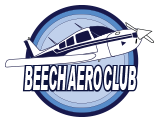flyingvet
Climbing to Cruise
I am a newby 1980 C24R Sierra owner, and have a few operational questions for Sierra owners. (I have had the ldg gear KLUXed) thanks.
1. My oil dipstick after 10 hours says 6 quarts. Am I right that this is enough, and if I put more in, say to 7 quarts, it will just blow out onto the belly. What do you keep as a standard amount? Do you add more before a long cross country flight?
2. Cruise flight, at 5000 ft alt say, is 25 squared about right with 10gph, and CHT 290, EGT 1380? What do you use, and still get good speed (I know you can throttle back etc, but this is for long cross country flying, and we need speed too). Do you ever use full throttle and 2700 rpm constantly?
3.On takeoff, is it OK for the RPM to reach 2900 rpm for 10-20 seconds, or is that too high (I thought 10 % more than redline 2700 rpm briefly was still safe). I quickly adjust it down to 2700 rpm anyhow.
4. After takeoff to say 1000 ft agl, do you ever reduce power to 25 square to continue climb, or do you stay full throttle and 2700 rpm to cruise alt?
5.During descent do you ever follow the reduce MP by 2 inches at a time to reduce shock cooling, or since we do not have cowl flaps, this is not an issue for Sierras?
6. I can not keep RPM out of the red-band 2100-2350rpm on final approach to landing, descending with reduced MP say at 15 inches, and props full forward. I am assuming since MP is low, and we are about to land, the RPM in red-band is OK. Is it? If not, what combo of MP and RPM do you manage to keep RPM out of red-band?
Thanks for your advice in advance.
Happy holidays!
Dinj
1. My oil dipstick after 10 hours says 6 quarts. Am I right that this is enough, and if I put more in, say to 7 quarts, it will just blow out onto the belly. What do you keep as a standard amount? Do you add more before a long cross country flight?
2. Cruise flight, at 5000 ft alt say, is 25 squared about right with 10gph, and CHT 290, EGT 1380? What do you use, and still get good speed (I know you can throttle back etc, but this is for long cross country flying, and we need speed too). Do you ever use full throttle and 2700 rpm constantly?
3.On takeoff, is it OK for the RPM to reach 2900 rpm for 10-20 seconds, or is that too high (I thought 10 % more than redline 2700 rpm briefly was still safe). I quickly adjust it down to 2700 rpm anyhow.
4. After takeoff to say 1000 ft agl, do you ever reduce power to 25 square to continue climb, or do you stay full throttle and 2700 rpm to cruise alt?
5.During descent do you ever follow the reduce MP by 2 inches at a time to reduce shock cooling, or since we do not have cowl flaps, this is not an issue for Sierras?
6. I can not keep RPM out of the red-band 2100-2350rpm on final approach to landing, descending with reduced MP say at 15 inches, and props full forward. I am assuming since MP is low, and we are about to land, the RPM in red-band is OK. Is it? If not, what combo of MP and RPM do you manage to keep RPM out of red-band?
Thanks for your advice in advance.
Happy holidays!
Dinj
